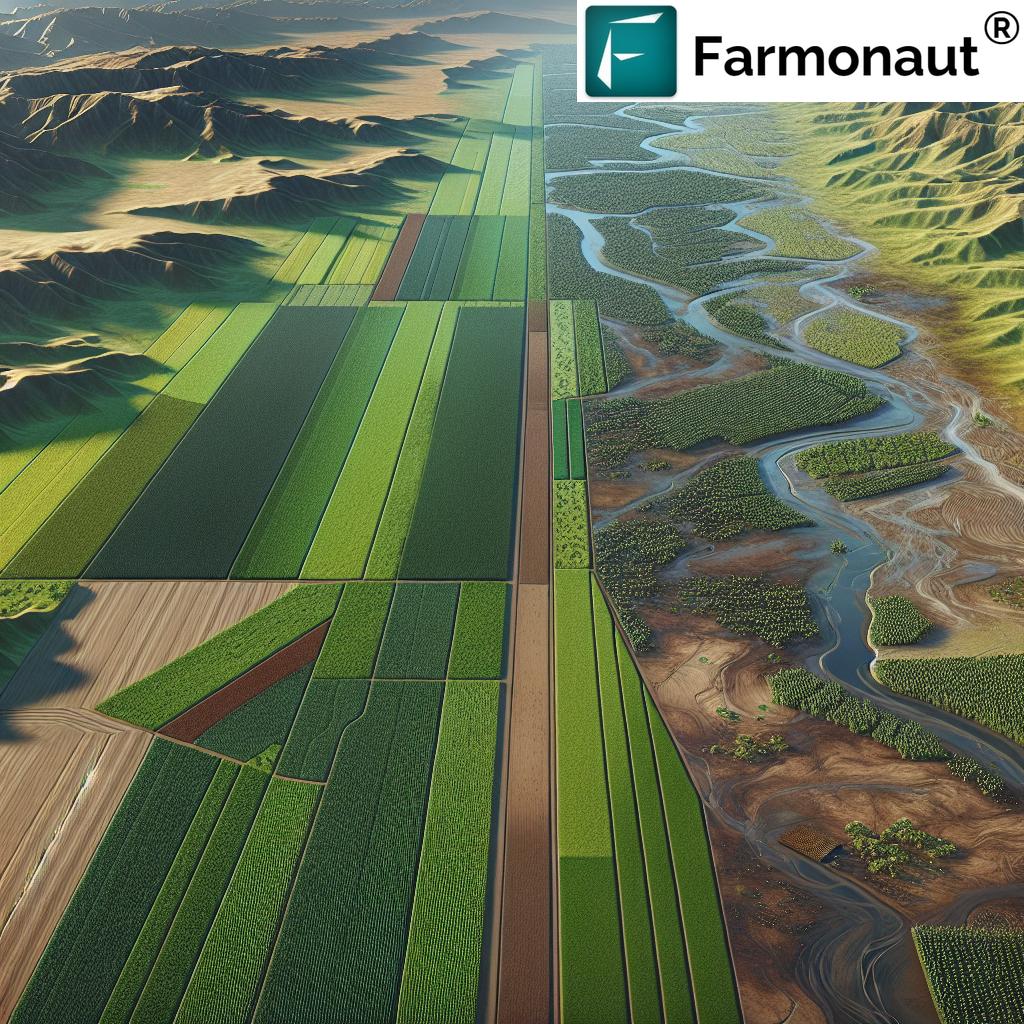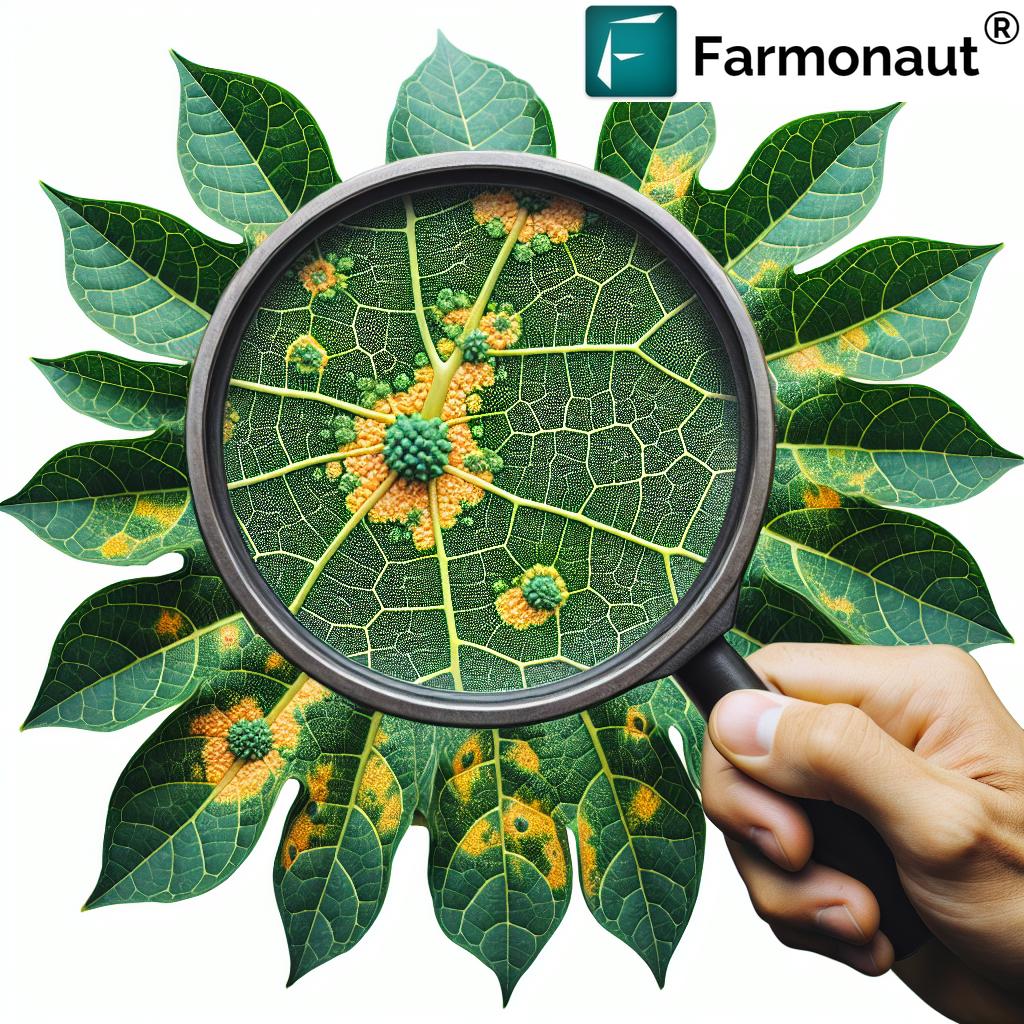Weed Control Near Me: 7 Effective Methods for Sustainable Yields
“Mechanical weeding can reduce weed density by up to 80% in integrated farming systems.”
Introduction: Why Weed Control Matters
Weed control is a fundamental aspect of agriculture, forestry, and sustainable farming systems. Whether we’re nurturing a thriving crop field, managing a productive forest, or maintaining urban green spaces, effective weed management directly influences yields, plant health, ecosystem balance, and long-term sustainability. Weeds are more than just unwanted plants—they’re competing for vital resources like water, light, nutrients, and space. If left unchecked, they can reduce crop quality, increase harvesting costs, disrupt forest regeneration, and lead to the development of herbicide resistance.
In this in-depth guide, we’ll explore seven proven, integrated weed control methods—covering mechanical, chemical, biological, cultural, and innovative strategies. Our goal is to help you choose and combine the most suitable techniques for your local environment, objectives, and sustainability goals.
Understanding Weeds and Their Impact
Weeds are plants that grow where they are not wanted. In agriculture, weeds compete with crops and native vegetation for precious resources: light, water, nutrients, and space. The impact of weeds includes:
- Reduced Yields: Weeds divert water and nutrients from crops, directly affecting productivity.
- Poor Quality: Some weed species can taint harvested crops, lowering commercial quality.
- Increased Costs: Weeds complicate harvesting and require extra labor, raising management costs.
- Forest Disruption: Invasive weed species disrupt regeneration and ecosystem balance in forestry.
- Biodiversity Loss: Uncontrolled weed growth reduces native biodiversity.
Understanding weed biology, life cycles, and invasiveness is key to designing effective weed management strategies that are both locally relevant and sustainable.
Integrated Weed Management (IWM): A Holistic Approach
Integrated Weed Management (IWM) is a comprehensive system that combines multiple weed control methods—mechanical, chemical, biological, cultural practices, and advanced technologies. The IWM approach involves:
- Analyzing the biology and growth patterns of common weed species in your area
- Adapting to environmental conditions (soil, water, climate, crop types)
- Weighing economic and operational costs
- Selecting sustainable weed management methods to reduce reliance on single approaches and delay herbicide resistance
- Tailoring weed control methods to the specific objectives (eg. yield maximization, environmental stewardship)
IWM makes weed management more resilient, environmentally friendly, and economically feasible.
Mechanical Weed Control Techniques
Mechanical weed control methods use physical force or devices to remove or destroy weeds. These approaches are foundational in both agriculture and forestry—and often form the backbone of organic weed control practices that avoid chemical herbicides.
Key Mechanical Weed Management Methods
- Mowing: Regular mowing prevents weeds from flowering and setting seeds, which suppresses their spread in fields, orchards, and around irrigation canals.
Tip: Adjust mowing frequency and height for different crop types and weed species. - Tilling: Tilling (using plows, harrows, or rotavators) uproots weeds and buries weed seeds, making it integral for row crops and pre-planting field preparation.
- Deep tillage is highly effective but can lead to soil erosion and degradation if overused.
- Hand Weeding: Physically removing weeds by hand or with tools is highly selective and causes the least soil disturbance (popular on organic farms and gardens).
- Flaming: Applying heat via propane torches causes cell death in young weeds, useful in organic and sustainable weed management.
Mechanical weed control techniques are particularly beneficial for annual weed management and as a preventative step before other weed control methods. However, these methods require labor or machinery investment and careful timing for maximum effectiveness.
Chemical Weed Control: Efficient, But Needs Responsibility
Chemical weed control—using synthetic or organic herbicides—offers high efficacy and rapid results, especially for large-scale agriculture. However, improper use can lead to herbicide resistance management challenges, environmental impact, and legal regulations.
Types of Herbicides & Their Action
- Selective Herbicides: Target specific weed species without severely affecting the crop.
- Example: 2,4-D controls broadleaf weeds in cereals.
- Non-selective Herbicides: Kill most plants and are used for total vegetation control before planting or in non-crop areas.
- Example: Glyphosate applied pre-seeding in conservation tillage systems.
- Contact Herbicides: Destroy only the portion of the plant they touch.
- Systemic Herbicides: Absorbed by leaves or roots and kill the entire plant, including underground parts.
Best Practices for Effective Chemical Weed Management
- Herbicide Selection: Choose based on crop, weed species, and development stage for best results.
- Rotation & Mixtures: Rotate herbicides with different modes of action to delay the development of resistant weed populations.
- Application Timing: Apply herbicides when weeds are young and actively growing for maximum effectiveness.
- Environmental Considerations: Use correct dosages, proper nozzles, and consider environmental impact—protect water resources, pollinators, and non-target organisms.
- Regulatory Compliance: Always follow safety labels and government regulations.
Herbicide resistance management is critical: excessive reliance on chemicals can lead to resistant weed species, which are much harder to control. Integrate chemical controls with other weed management strategies for best results.
• Check out our Satellite Data API for real-time crop monitoring.
• See API Developer Documentation for implementation guides.
Biological Weed Control: Harnessing Nature
“Biological weed control methods have shown a 60% success rate in reducing invasive species on sustainable farms.”
Biological weed control uses natural predators, insects, pathogens, or grazing animals to reduce weed populations organically and with minimal human intervention.
- Natural Predators & Insects: Introducing specific insects or animals (e.g., beetles, weevils, goats) that selectively feed on unwanted weed species and disrupt their seed production.
- Pathogens: Using fungi, bacteria, or viruses that infect and suppress weeds without harming crops.
- Allelopathic Plants: Growing cover crops that suppress weed growth through natural chemical release (allelopathy).
Biological weed control is widely used in forest management and areas where minimum chemical input is desired. Careful planning and monitoring are essential to prevent unintended consequences like the spread of imported natural enemies to non-target plants.
Cultural & Organic Weed Control Practices
Cultural practices are proactive strategies that adjust farming routines to reduce weed growth. These methods are cornerstones of sustainable weed management and can be seamlessly combined with other integrated weed management systems.
- Crop Rotation: Switching crops with different life cycles and growth habits disrupts weed population cycles and reduces pressure.
- Cover Cropping: Cover crops for weed suppression like clover or rye restrict sunlight, compete for nutrients, and improve soil health—especially useful between crop cycles or in fallow fields.
- Mulching: Organic or synthetic mulches block light, preventing seed germination and conserving soil moisture.
- Seeding Timing: Early or delayed planting can outcompete weeds by giving crops a head start.
- Dense Planting: Maximizes crop coverage and shades out weeds.
Organic weed control practices minimize chemical inputs and support overall ecosystem health, making them essential for certified organic farming and integrated weed management. For a deeper dive into sustainable approaches, see our Carbon Footprinting tools—track sustainability gains as you improve your weed management strategies.
Innovative Technology & Emerging Weed Control Methods
Rapid advances in agricultural technology are producing new weed control methods that increase precision, reduce environmental impact, and offer alternatives to traditional herbicides or mechanical tillage. Technological innovation is at the forefront of sustainable weed management.
- Laser Weeding: Advanced robots use AI and high-resolution imaging to identify and destroy weeds with targeted laser bursts, leaving crops unharmed. This breakthrough is particularly suited for precision row crop agriculture.
- Flooding: Water saturation techniques (standing water 15–30cm deep for several weeks) kill perennial weeds by depriving roots of oxygen. Highly effective and widely practiced in rice paddies.
- AI & Machine Learning: Modern platforms like Farmonaut offer satellite-based crop health monitoring, enabling early weed hotspot detection and optimizing weed control timing.
- Blockchain Traceability: In some agricultural markets, blockchain-based product traceability tools ensure crop quality and sustainability—providing data-driven support for weed management decisions and agricultural transparency.
- Smart Resource Management: Advanced fleet management solutions help schedule mechanical weed control activities efficiently.
Embracing new technologies not only increases effectiveness but also helps reduce input costs, build ecosystem resilience, and make weed control more sustainable for future generations.
Comparative Table: 7 Effective Weed Control Methods
The following table summarizes the seven core weed control methods for agriculture and forestry. Compare them at a glance to find the best approach(es) for your land and objectives.
| Method | Technology/Innovation Used | Estimated Effectiveness (% reduction in weed presence) |
Sustainability Rating | Estimated Cost Level | Application Complexity | Typical Use Case |
|---|---|---|---|---|---|---|
| Mechanical Control (Mowing, Tilling) | Mowers, tillers, plows, rotary tools | 60-80% | Medium-High | $–$$ | Easy–Medium | Row crops, orchards, pastures |
| Chemical Control (Herbicides) | Selective, non-selective, contact or systemic herbicides | 70-95% (short-term) | Low-Medium | $ | Easy | Broadacre farms, industrial sites |
| Biological Weed Control | Insects, pathogens, grazing animals | 40-60% | High | $$ | Medium | Sustainable farms, nature reserves, forestry |
| Cultural & Crop Rotation | Timely crop rotation, cover cropping, dense planting | 50-70% | High | $ | Easy | Cereal-legume rotations, vegetable fields |
| Organic Mulching | Straw, wood chips, compost, organic matter | 40-60% | High | $–$$ | Easy | Low-tillage organic systems, gardens |
| Flooding | Field water management, levees | 70-90% | Medium-High | $$ | Advanced | Rice fields, wetland restoration |
| Innovative Technology (Laser Weeding, AI) | Robots, lasers, AI-based satellite monitoring | 75-90% | High | $$$ | Advanced | High-value cropping systems |
Challenges, Considerations, and Solutions in Weed Control Near Me
Implementing effective weed control methods—whether in agriculture, forestry, or horticulture—presents several challenges. Sustainable solutions require a balance between effectiveness, ecosystem health, and economic viability.
-
Herbicide Resistance: Frequent and repeated use of one chemical increases the risk of resistant weed populations.
Solution: Rotate herbicides with different modes of action and always integrate with mechanical and cultural methods. -
Environmental Impact: Herbicides and mechanical tillage can affect soil structure, water quality, and non-target organisms such as pollinators.
Solution: Practice minimal tillage, buffer zones, and use carbon footprint tracking for environmental monitoring. -
Economic Factors: The upfront cost of machinery, labor, or advanced technologies (like robots) may be high for some farms.
Solution: Assess ROI by calculating yield gains versus costs. Explore subscription-based apps or loan & insurance tools to help with technology adoption and crop loss protection. -
Unintended Consequences: Introduction of biological control agents (insects, pathogens) may affect native plants if not carefully managed.
Solution: Conduct site-specific research before biological releases, monitor outcomes, and update management plans regularly. -
Operational Complexity: Combining multiple methods requires expertise, scheduling, and sometimes, real-time monitoring.
Solution: Use farm management platforms for digital planning, satellite monitoring, and task tracking.
By recognizing and proactively addressing these challenges, you can achieve more resilient, effective, and sustainable weed management for higher yields and ecosystem health.
Farmonaut’s Role in Sustainable Weed Management
At Farmonaut, we recognize that the future of weed control—and, indeed, all of agriculture—depends on integrating technology with proven traditional practices. That’s why we provide an advanced, satellite-based farm management platform designed to help farmers and agribusinesses make optimal, site-specific decisions for weed management, crop health, and resource use.
- Satellite-Based Crop Health Monitoring: Our platform harnesses multispectral satellite imagery to monitor vegetation health (NDVI), soil moisture, and other crop metrics. Early detection of weed stress (before visual symptoms) optimizes control actions.
- AI-Driven Insights: Through the Jeevn AI advisory system, users receive personalized crop management strategies, predictive weather updates, and targeted weed intervention recommendations.
- Blockchain-Based Product Traceability: Our traceability tools increase transparency and allow for smarter, sustainable weed control—especially for crops entering regulated or export markets.
- Fleet and Resource Management: We help agribusinesses organize and optimize weeding, tilling, and crop protection schedules—see details on reducing machinery costs.
- Environmental & Carbon Footprinting: With carbon footprint analysis, users can track the impact of their weed management systems—and adjust practices for sustainability, regulatory compliance, and efficiency.
Our subscription-based solution is scalable—serving everyone from smallholder farms to large agribusiness and government programs. Access Farmonaut on Android, iOS, or the web. For institutional users and developers, our API and documentation make integration easy.
Frequently Asked Questions on Weed Control Methods
What is integrated weed management (IWM)?
Integrated weed management (IWM) is a holistic strategy that combines cultural, chemical, mechanical, and biological approaches to suppress weeds effectively, delay herbicide resistance, and improve sustainability. IWM tailors weed control methods to local environments, crop needs, and long-term yield goals.
How can I prevent the development of herbicide-resistant weeds?
To manage herbicide resistance, rotate herbicides with different modes of action, always combine chemical control with mechanical and cultural methods, avoid under-dosing, and monitor weed populations for early signs of resistance.
Which weed control method is best for organic farms?
Organic farms benefit most from a combination of mechanical removal, crop rotation, cover cropping for weed suppression, mulching, and biological weed control. Careful management ensures ecosystem balance and yield sustainability without synthetic herbicides.
Are new technologies like laser weeding affordable?
Advanced innovations such as laser weeding and AI-powered weed detection systems require higher initial investment but can reduce long-term herbicide and labor costs. They are especially suited for high-value crops or large-scale farms.
How can I monitor the effectiveness of my weed control strategy?
Use regular field scouting, record weed density before and after treatments, and leverage digital solutions like Farmonaut’s satellite-based crop health monitoring to spot problem areas early and adjust management plans.
Does Farmonaut provide weed control services or just monitoring?
Farmonaut is not a weed control contractor or a supplier of herbicides/machineries. We provide advanced satellite-based monitoring, advisory, traceability, resource management, and sustainability analytics tools. These help users make informed weed control and crop protection decisions—tailoring strategies to each farm’s needs.
Conclusion: Achieving Balance for Productivity & Sustainability
Weed control near me isn’t about fighting a losing battle with nature. It’s about integrating science, technology, and traditional knowledge for smart, sustainable weed management—preserving crop yields, ecosystem balance, and farm profits. By blending mechanical control, chemical methods, biological strategies, and innovative approaches within an integrated weed management (IWM) framework, you can overcome challenges such as herbicide resistance, environmental impact, and operational costs.
Farmonaut empowers modern agriculture by translating satellite imagery and AI insights into actionable solutions for weed and crop management. With technology in your hands—and proven weed control methods at your disposal—choose the strategies that work best for your fields, forests, and local climate. The result: healthy crops, higher yields, thriving environments, and resilient farm businesses.
Ready to take the next step in precision weed management?  Explore Farmonaut’s tools—where technology meets tradition for a sustainable future.
Explore Farmonaut’s tools—where technology meets tradition for a sustainable future.





















